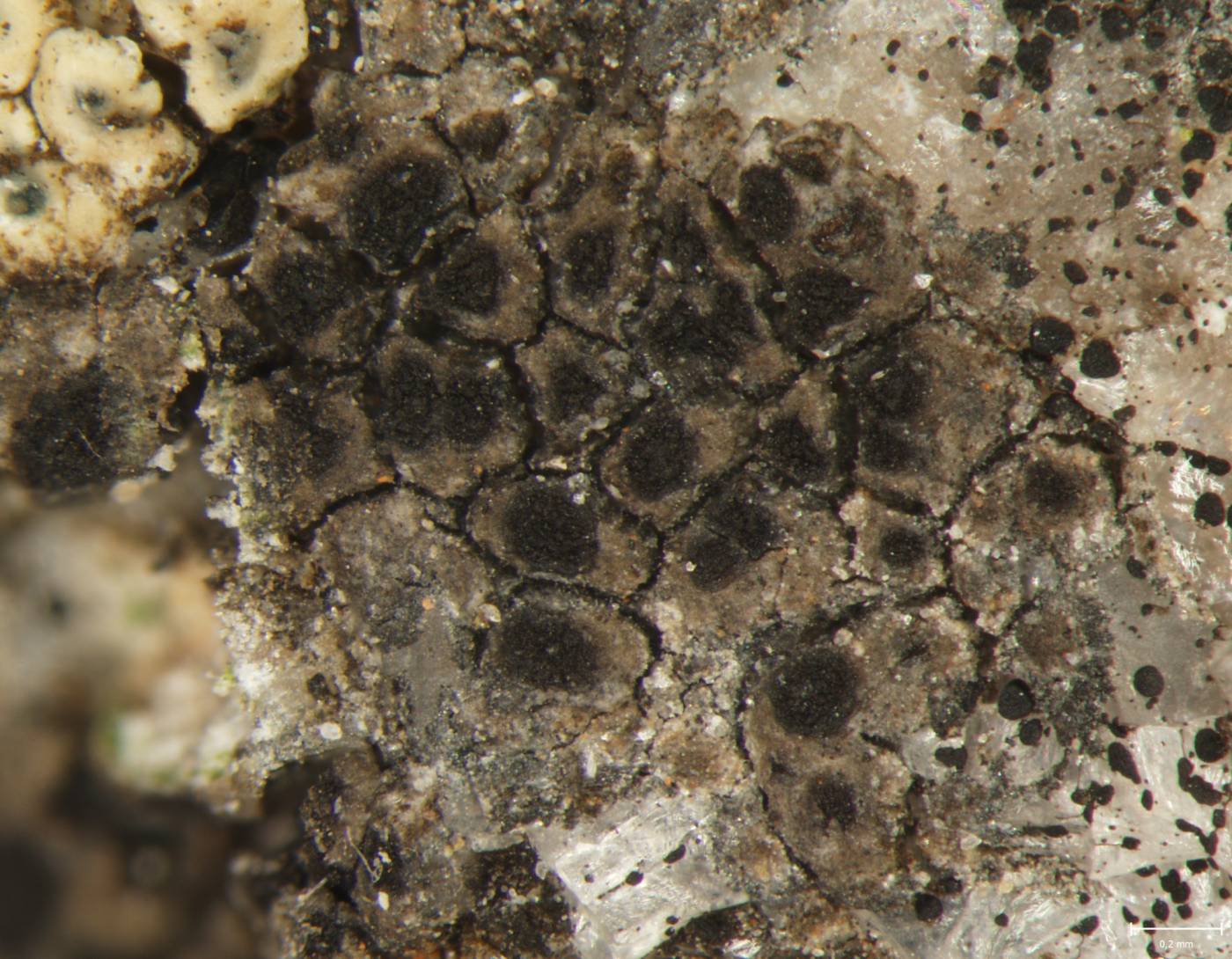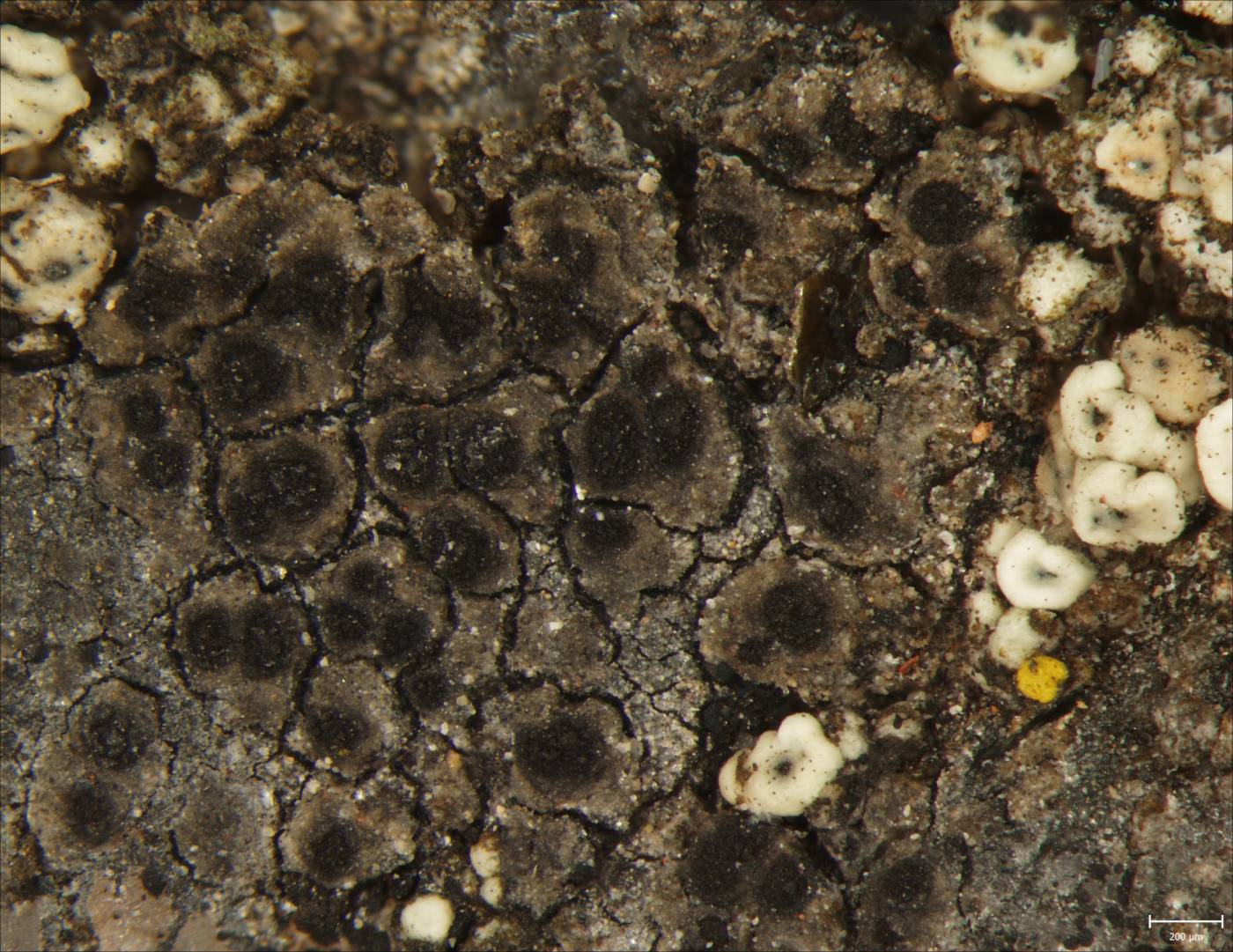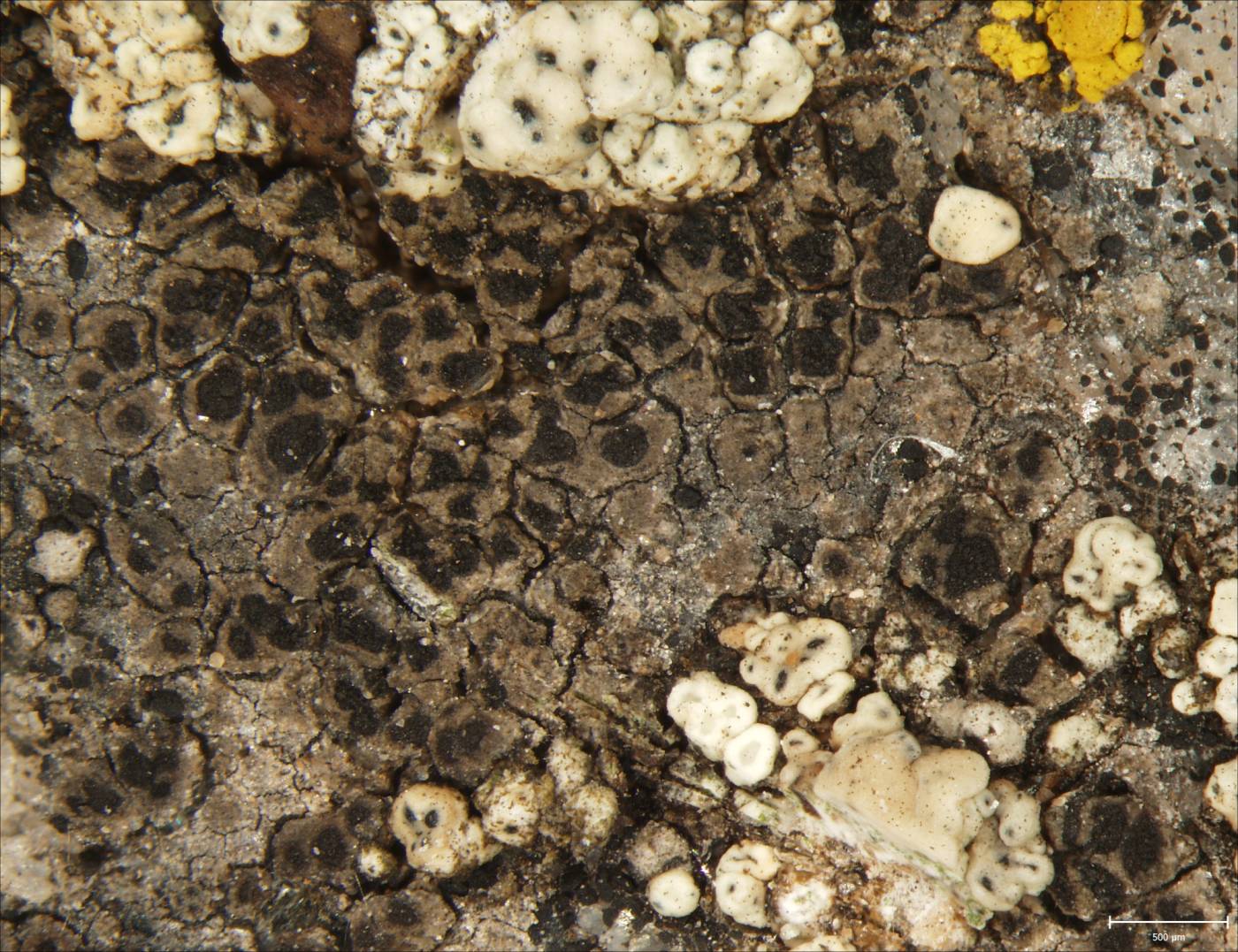A tiny species with a grey-brown radial thallus, only a few mm in diameter, and immersed black apothecia. It does not contain any secondary metabolite detectable by TLC. The species resembles B. stellulata which, however, produces a variety of secondary metabolites (atranorin, confluentic acid and 2’-O-methylperlatolic acid).
Buellia microcarpa occurs on sun-exposed, nutrient-enriched siliceous rocks in steppe habitats or in open screes, often accompanied by, for example, Acarospora veronensis, Amandinea punctata, Rinodina aspersa and Verrucaria nigrescens. The species has been described recently from the Czech Republic, namely from few localities in the Křivoklát region and from the uranium dumps near Příbram, where it grew together with the similar B. aethalea. Subsequently, it was also found on trachyte screes in the České středohoří Hills (Lipská hora) and near on basalt near Provodín. It is probably a more common pioneer lichen of xerothermic habitats, which has so far escaped attention.
Literature: Vondrák J. et al. (2022): From Cinderella to Princess: an exceptional hotspot of lichen diversity in a long-inhabited central-European landscape. – Preslia 94: 143–181.
taxonomic classification:Ascomycota → Lecanoromycetes → Caliciales → Caliciaceae → Buellia
Red List (Malíček 2023):DD – data deficient
Occurrence in the Czech Republic
All records: 10, confirmed 10. One click on a selected square displays particular record(s), including their source(s).




